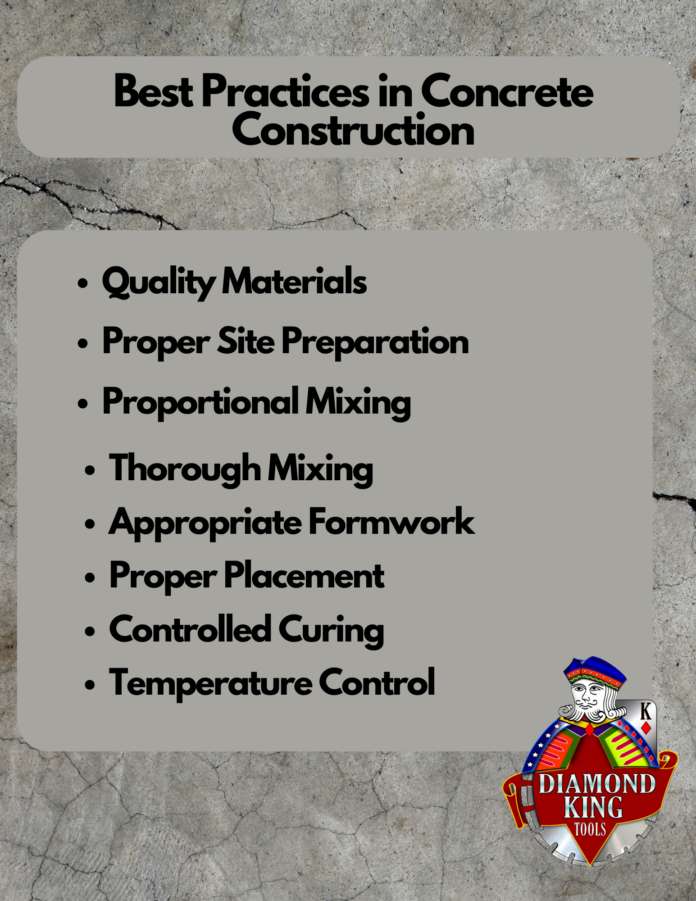Concrete is the backbone of countless construction projects, providing strength, durability, and versatility. However, achieving excellence in concrete construction requires adherence to best practices. We’ll take a look at some of the best practices for concrete cutting.
Quality Materials:
- Start with high-quality concrete mixtures that meet project specifications.
- Ensure that aggregates, cement, and water are of the highest quality to guarantee the strength and durability of the finished product.
Proper Site Preparation:
- Adequately prepare the construction site by removing debris, organic materials, and unstable soil.
- Grade and compact the soil to create a stable foundation for the concrete.
Proportional Mixing:
- Follow the recommended mix proportions specified by engineers and architects.
- Use accurate measuring tools to achieve the correct ratio of cement, aggregates, and water.
Thorough Mixing:
- Mix the concrete thoroughly to ensure uniform distribution of materials.
- Pay attention to mixing times and consistency, avoiding overmixing or undermixing.
Appropriate Formwork:
- Use high-quality formwork that is properly installed and braced.
- Ensure that formwork is designed to withstand the pressure of fresh concrete without distortion.
Proper Placement and Consolidation:
- Place concrete evenly to prevent segregation and achieve a smooth surface finish.
- Consolidate the concrete using vibrators to remove air voids and ensure a dense, strong structure.
Controlled Curing:
- Implement proper curing procedures to maintain adequate moisture levels for the concrete to gain strength.
- Use curing compounds, wet curing blankets, or other methods depending on the project requirements.
Temperature Control:
- Monitor and control concrete temperature during mixing, placing, and curing.
- Protect the concrete from extreme temperatures to prevent cracking and other issues.
Quality Control and Testing:
- Conduct regular quality control checks during construction.
- Perform tests such as slump tests, compression tests, and air content tests to verify the concrete’s properties.
Safety Measures:
- Prioritize safety by following established safety protocols and providing proper protective equipment for workers.
- Ensure that the construction site is secure and that workers are trained in safe concrete handling practices.
Mastering concrete construction involves a combination of precision, quality, and attention to detail. By following these best practices, you can enhance the strength, durability, and overall quality of your concrete projects. Whether you’re involved in residential, commercial, or infrastructure construction, adherence to these guidelines will contribute to the success and longevity of your concrete structures. Those are some of the best practices for concrete cutting.
